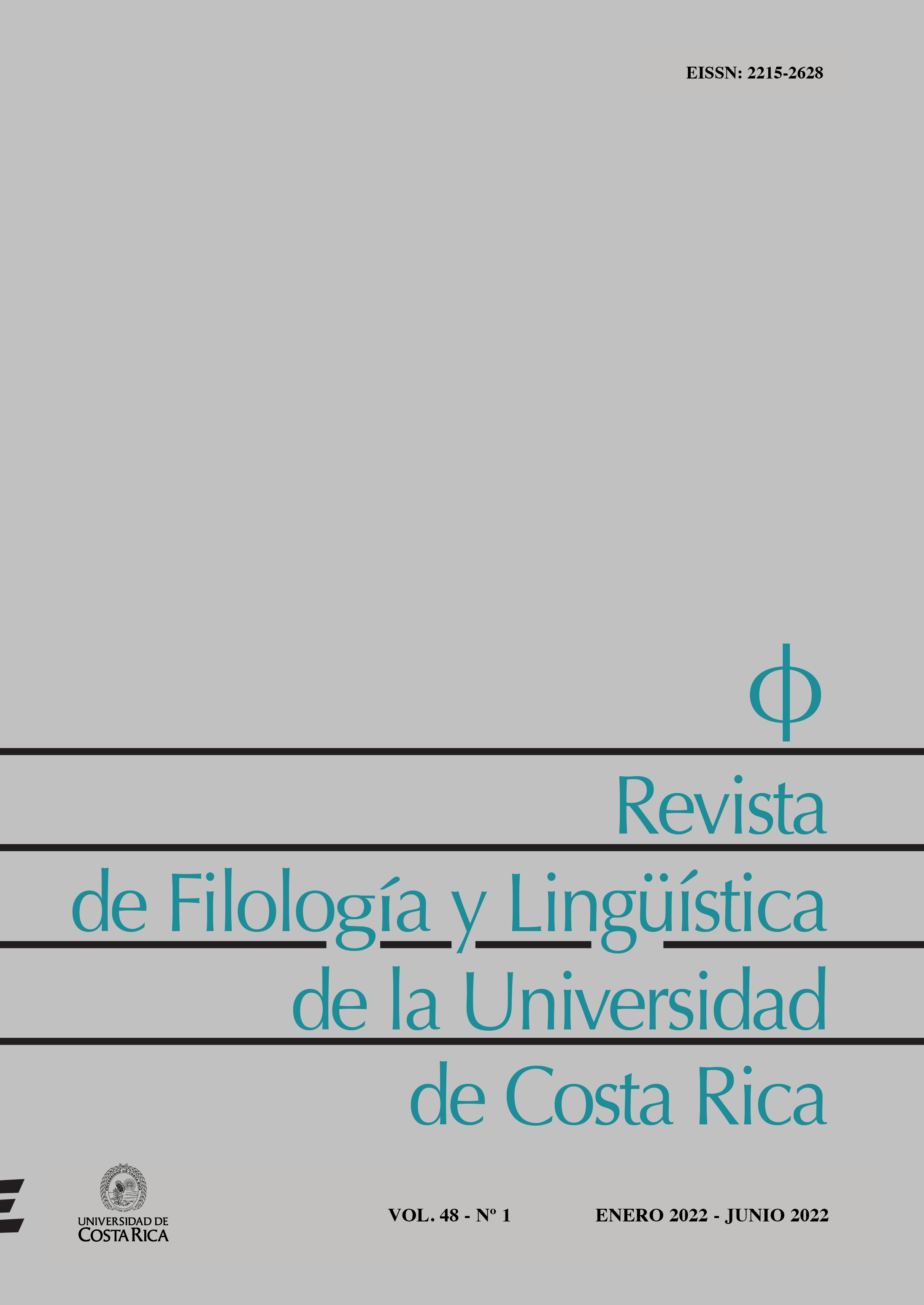Abstract
This article endeavors to study the literary image of Bruna Husky, the fictional character in Rosa Montero’s novels, according to the theory of the artistic image developed by Georges Didi-Huberman. This critic explores the artistic image as a symptom, that is, as a conflict among latent contradictory impulses, located not only in the author’s unconscious, but in society as a whole. As a character, Bruna husky shows a conflict between prosopography (visual image, physical description) and etopeia, (a character’s values and actions). While Bruna Husky’s prosopography shows us a masculinized woman, her etopeia reveals a woman who is still subservient to her male partner through the romantic mystique of ideal love. In this way, Bruna Husky represents an interesting but failed attempt to find a literary image of an independent woman in our time.
References
Campanario, D. y Valdrighi, A. (2011). Lágrimas en la lluvia. [Novela gráfica]. Barcelona: Editorial Planeta DeAgostini.
Casa del Libro. (2021). Lágrimas en la lluvia. Rosa Montero. Recuperado de https://www.casadellibro.com/libro-lagrimas-en-la-lluvia/9788432224201/2473081
Chandler, R. (1988). The simple Art of Murder. Nueva York: Vintage Books.
Costa, J. (23 de febrero de 2015). Ligeramente Replicante. El País Babelia. Recuperado de https://elpais.com/cultura/2015/02/19/babelia/1424350571_571046.html
De Beauvoir, S. (2010). The Second Sex. (C. Borde y S. Malovany-Chevallier, trad.). New York: Vintage Books, Alfred A. Knopf.
Deeley, M. (Productor) y Scott, R. (Director). (1982). Blade Runner. [Película]. The Ladd Company: Estados Unidos.
Didi-Huberman, G. (2009). Confronting Images. (J. Goodman, trad.). Pennsylvania: The Pennsylvania State University Press.
Didi-Huberman, G. (2017). The Surviving Image. (H. L. Mendelssohn, trad.). Pennsylvania: The Pennsylvania State University Press.
Haraway, D. (1991). Simians, Cyborgs and Women. The Reinvention of Nature. New York: Routledge.
Kafka, F. (2000). The Trial. London: Penguin Modern Classics.
Lussier, M. y Gowan, K. (2012). The Romantic Roots of Blade Runner. The Wordsworth Circle, 43(3), 165-172.
Martín Galván, J. C. (2016). Narración, monstruosidad y la condición poshumana en El peso del corazón: la segunda novela de Bruna Husky. Hispanofilia, 176, 99-115.
Martínez-Quiroga, P. (2018). La detective Bruna Husky de Rosa Montero: Feminismo, distopía y conciencia cyborg. Hispania, 101(2), 306-317.
Montero, R. (2006). La loca de la casa. Madrid: Punto de Lectura.
Montero, R. (2011). Lágrimas en la lluvia. Barcelona: Seix Barral.
Montero, R. (2015). El peso del corazón. Barcelona: Seix Barral.
Montero, R. (2018). Los tiempos de odio. Barcelona: Seix Barral.
Naranjo, C. (30 de octubre de 2018). Montero: Estamos en el umbral de una posible involución democrática. Agencia EFE. Recuperado de https://www.efe.com/efe/espana/cultura/montero-estamos-en-el-umbral-de-una-posible-involucion-democratica/10005-3797729
Platón. (2010). El Banquete. Madrid: Ediciones Ibéricas.
Pratt, D. J. (2017). Vidas virtuales, memorias postizas: teorías de la identidad personal en Lágrimas en la lluvia. Alambique, 5(1). doi: http://dx.doi.org/10.5038/2167-6577.5.1.6
Kathrani, P. (2018). Do Androids Dream of Asylum? The Blade Runner Films (1982, 2017) and the Fear of the Other. Entertainment and Sports Law Journal, 16(0). doi: https://doi.org/10.16997/eslj.213
Sanz, I. (2017). Human and Nonhuman Intersections in Rosa Montero’s Bruna Husky Novels. Science Fiction Studies, 44(2), 323-320.
Shelley, M. (2018). Frankenstein. London: Penguin.
Tejera-García de la Concha, Mercedes. (2020). La cíborg de Rosa Montero como utopía de la redención social. Alambique, 7(1), 1-20.
Walsh, A. L. (2015). The Shifting Centre: A futuristic View of Madrid in Rosa Montero’s Lágrimas en la lluvia. Journal of Iberian and Latin American Research, 21, 295-305.
Walsh, A. L. (2017). Fictional Portrayals of Spain’s Transition to Democracy. Newcastle-upon-Tyne, Inglaterra: Cambridge Scholars Publishing.
Yeates, R. (2017). Urban Decay and Sexual Outlaws in the Blade Runner Universe. Science Fiction Studies, 44(1), 65-83.


